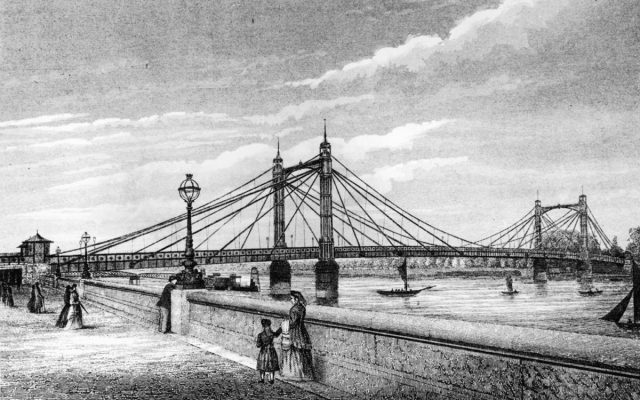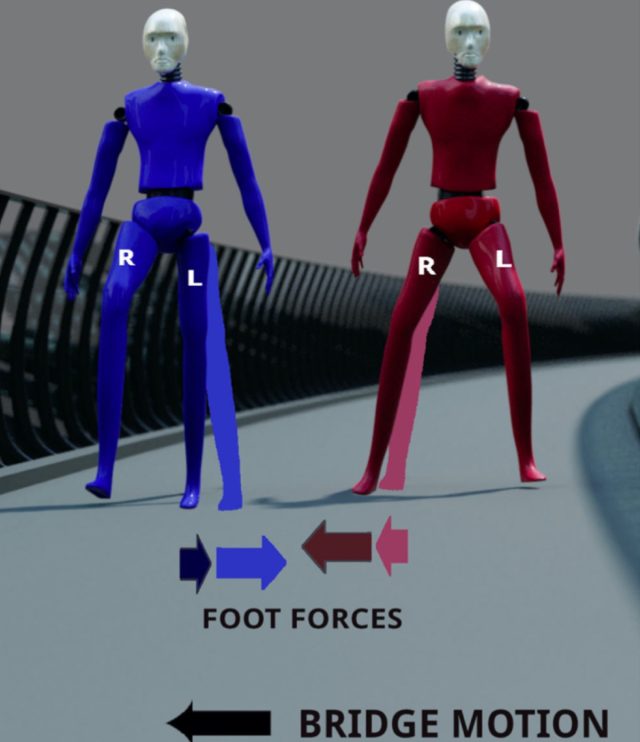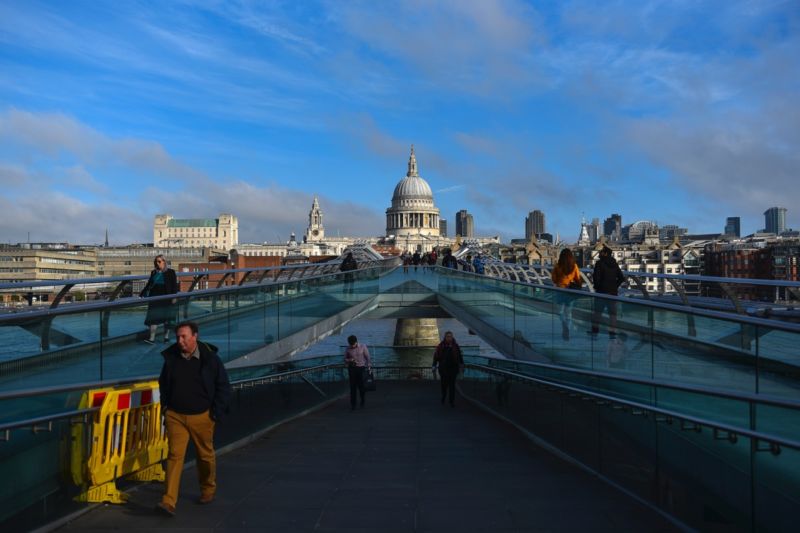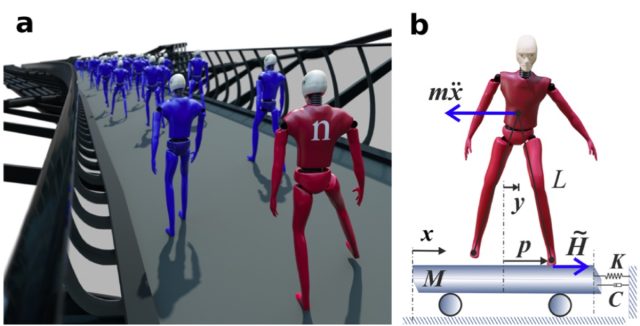London's Millennium Bridge is notorious for its "wobble" when it first opened in June 2000, as thousands of pedestrians streamed across. Londoners nicknamed it "Wobbly Bridge." The accepted explanation has been that the swaying was due to a weird synchronicity between the bridge's lateral (sideways) sway and pedestrians' gaits—an example of emergent collective phenomena.
But that explanation turns out to be a bit more complicated, according to a recent paper published in the journal Nature Communications. “This [old] explanation was so popular, it has been part of the scientific zeitgeist,” said co-author Igor Belykh, a mathematician at Georgia State University. “Our work shows that very tiny vibrations from each person walking can get amplified significantly." People adjust their footsteps to keep their balance in response to the wobble, which only makes things worse. Eventually the bridge becomes unstable.
As we've reported previously, this phenomenon is not limited to the Millennium Bridge. There's a sign dating back to 1873 on London's Albert Bridge warning military troops to break their usual lock-step motion when crossing, since the bridge is wont to shake and wobble—hence its nickname, "The Trembling Lady." Other similar "unstable" bridges include the Clifton Suspension Bridge in Bristol, UK; the Squibb Park Bridge in Brooklyn, New York; and the Changi Mezzanine Bridge in Singapore's airport.
Many different approaches to studying these fascinating dynamics have been taken over the years, including a lab-based treadmill recreation of people walking across Millennium Bridge by Cambridge University engineer Allan McRobie. (McRobie is a co-author on the new paper.) Cornell University mathematician Steven Strogatz co-authored a seminal 2005 Nature paper with McRobie and two others that modeled the dynamics of the Millennium Bridge as a weakly damped and driven harmonic oscillator.

According to Strogatz, the bridge was driven to sway sideways by the pedestrians as they walked across it. Their periodic footfalls pumped energy into the bridge and caused it to move from side to side, which in turn caused the people to adjust their gaits to conform to the movement of the bridge. Over time, the pedestrians inadvertently fell into sync with each other and thereby caused the bridge to wobble even more severely. The spontaneous synchrony of the crowd was similar to what happens with the highly synchronized flashing of fireflies or firing of neurons in the brain.
But that original explanation was incomplete. "The initial impulse a lot of researchers had when looking at this problem was that it was about collective behavior," Varun Joshi, a biomechanical engineer at the University of Michigan, told Ars. "This was based on the presence of multiple pedestrians and the apparent synchronization between them, as observed in videos. However, data collected from actual bridges showed a lack of synchronization in many cases. This led to a lot of experimental work studying individual human response to shaken treadmills, looking for a 'negative damping effect' from individuals. The hope was that the scaled effect of negative damping (even without any adaptation to the presence of other people) would explain the phenomenon."

When Joshi was at Ohio State University, he and his co-author, Manoj Srinivasan, simulated the biomechanics of large crowds of people walking on a bridge, resulting in an improved model of how people adjust their gait when walking on a wobbly surface. Their findings suggested that one might not even need synchronization to cause the shaking. The improved model correctly predicted some phenomena that the 2005 model couldn't account for, like the wobbling of footbridges even in the absence of crowd synchrony. Also, the onset of crowd synchrony and the onset of bridge wobbling are not simultaneous. They occur at different numbers of pedestrians.
This latest study builds on 2017 research by Belykh et al., using biomechanically inspired models based on an inverted pendulum to imitate people's lateral motion, as well as forward motion. This revealed a "threshold effect," or tipping point. While the widespread view was that the more pedestrians were on the bridge, the more the bridge would wobble, they found that more pedestrians produced wilder oscillations—but only for crowds above a critical size. For instance, 164 people on the Millennium Bridge will not result in shaking, but adding one more person will tip the balance.
They also devised a mathematical formula that could be used to estimate the critical crowd size at which any given bridge would begin to wobble. The new paper further refines that formula, based on data collected from 30 different bridges. Belykh and colleagues concluded that synchronized pedestrian foot movement need not be the main cause of the onset of bridge vibrations. Bridges can start to wobble even if there is no synchronization among the pedestrians. The pedestrian synchronization exacerbates, but does not cause, the oscillations.



3175x175(CURRENT).thumb.jpg.b05acc060982b36f5891ba728e6d953c.jpg)


Recommended Comments
There are no comments to display.
Join the conversation
You can post now and register later. If you have an account, sign in now to post with your account.
Note: Your post will require moderator approval before it will be visible.